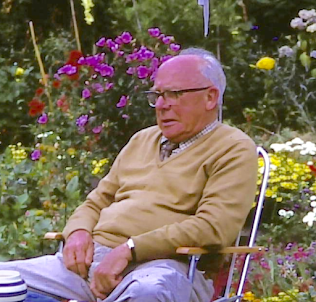Between the two World Wars the hundreds of little roads around Newport and Cilgwyn were being improved and provided with asphalt surfaces, and there was a great demand for crushed roadstone. Seeing a commercial opportunity in this, five Newport men decided that Carningli bluestone would fit the bill perfectly, since it could be obtained in good quantities from the lower scree slopes of the mountain with relatively little effort. They cleared things with the Commoners, applied to the Barony of Cemais for permission to take stone from the mountain (in exchange for a royalty for every ton taken), and did a deal with the County Council.
They set up in business, and built a narrow-gauge railway track about 500 yards long from the Cilgwyn Road up onto the mountain side. It runs almost east-west. In some places the men had to build embankments, and in others they had to excavate cuttings. They built a small crushing plant at the roadside, operated by a diesel engine. At the top of the incline they constructed two masonry pillars to support a large cable drum, the mountings for which were fixed on two large iron bolts on the top of each pillar. Another diesel engine was installed adjacent to the pillars, and this provided the power to rotate the drum and pull in the cable. They installed the railway track and bought three little railway trucks, which were connected together and then coupled to one end of the cable. When the trucks were stationed at the top of the incline they could be filled with blocks of stone carried from the quarrying area in a horse-drawn cart. Then they would be let down under the force of gravity, using a braking system on the cable drum to control the rate of descent. When they reached the bottom, they would be unloaded and the stone fed into the crushing plant. Then the upper diesel motor would be started, and the cable would be wound in again, pulling the three trucks back up to the top of the incline for a fresh load of stone.
I have never seen any written records (or photographs) of this short-lived industrial enterprise, but according to rumour it only lasted for a few years. Two men worked in the crushing plant and three up on the mountain. The “quarry” was maybe a hundred yards long, extending southwards along the contour from the winding gear. There are several obvious cuts into the mountain slope, but probably most of the rock which has been taken consisted of loose boulders and scree rather than solid rock. In the quarry the rock was broken up into stones about the size of footballs. Today we can still see still some piles of excavated stones here and there, but the most obvious trace of the quarrying activity is a cutting or gully which was used by the horse and cart for its journeys back and forth in delivering stone to the “loading bay”.
And what was it that brought the Industrial Revolution on Carningli to an end? It must have been a truly spectacular event. According to legend, one day around 1933 the man in the quarry who had charge of the dynamite became a little too enthusiastic, and this led to an almighty explosion which caused fragments of shattered bluestone to rain down upon the roofs of all the cottages in the cwm. Thankfully nobody was hurt, but there was such an outcry that the firm’s operating licence was revoked. The men dismantled their machinery and sold it off, leaving the mountain once again in the possession of sheep and angels.
This is all that's left of the crude shelter used by the quarrymen in this exposed location in inclement weather....... it's very close to the stone pillars, just to the north of the top of the incline. It probably had a corrugated iron roof.
















